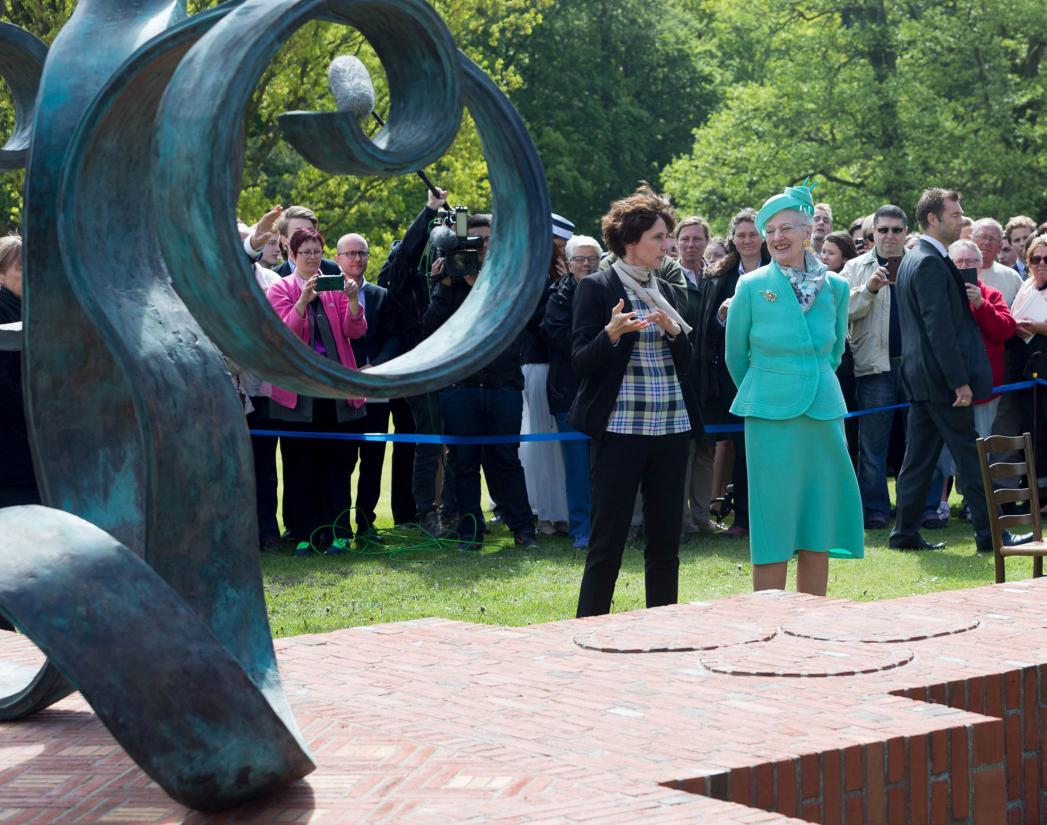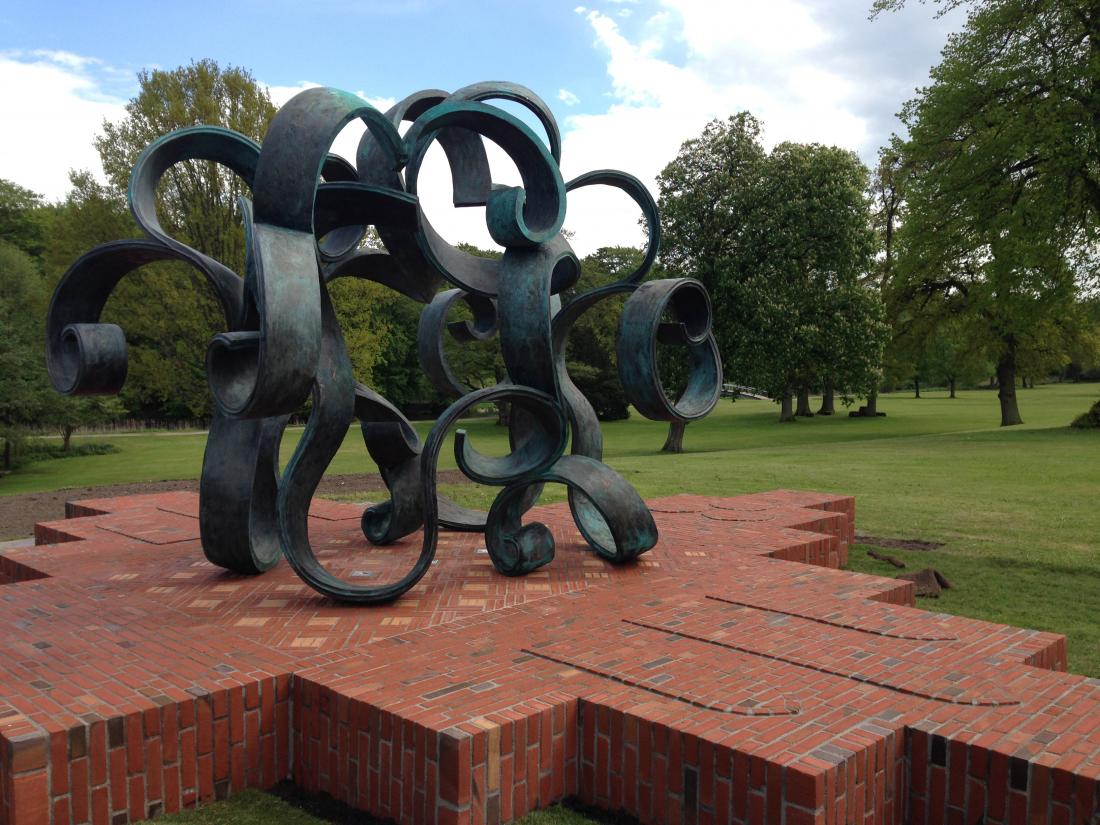To mark the occasion of Herlufsholm’s 450th anniversary, the New Carlsberg Foundation has donated a sculpture to the boarding school. The sculpture, which is more than three metres tall, was created specifically for the site by the visual artist Eva Steen Christensen and is called ‘Thélème’, a derivative from the ancient Greek word for ‘will’. The official unveiling of the sculpture took place on 23 May 2015.
The dominant characteristic of the bronze sculpture is the tangle of organic limbs that loop in and out among each other. Eva Steen Christensen’s inspiration came in part from the Renaissance artist Cornelis Floris, who created several works of art for the school’s founders, Birgitte Gøye and Herluf Trolle. Thus, several of Floris’s works feature grotesques consisting of interwoven plant, animal and human figures and architectural fragments.
New developments and offshoots
The bronze sculpture is placed on a brick foundation shaped like four gables laid down on the lawn surrounding a rectangular field whose shape corresponds to the floor of Herlufsholm Church.
‘The folded-out building lies in the grass like an image, making it possible to walk on the walls or rest on the peak of a gable. The sculpture is intended as a space in motion, an unfolding space, where the bronze form resembles a powerful cloud or a liberated spirit that rises up from the fallen gables of the foundation,’ says Eva Steen Christensen.
‘The basic element of the sculpture – the many sweeping arches – addresses the many developments and new offshoots that have characterized the past 450 years’ development within science, politics, religion, psychology, etc.’, the artist explains.
‘The acquisition of learning, which gives people access to “new worlds”, and which drives the transformation from child to adult, from ignorant to enlightened, occurs most clearly during the school years and helps to shape our identity and consciousness.’
The force of will
Eva Steen Christensen explains that the title of the sculpture was inspired by the French 16th-century writer Rabelais’s descriptions of the utopian monastery Abbaye de Thélème, where the main motto that guided life was ‘Do what you will!’ Here, the force of will was seen as the basis of grand accomplishments.
‘We all have our own will, and if we become aware of this, we can use this force for good in our lives,’ says Eva Steen Christensen.
JJ Film visited Eva Steen Christensen in Pietrasanta, Italy, while she worked on the sculpture for Herlufsholm. Click here to see raw footage featuring Eva Steen Christensen at work:





